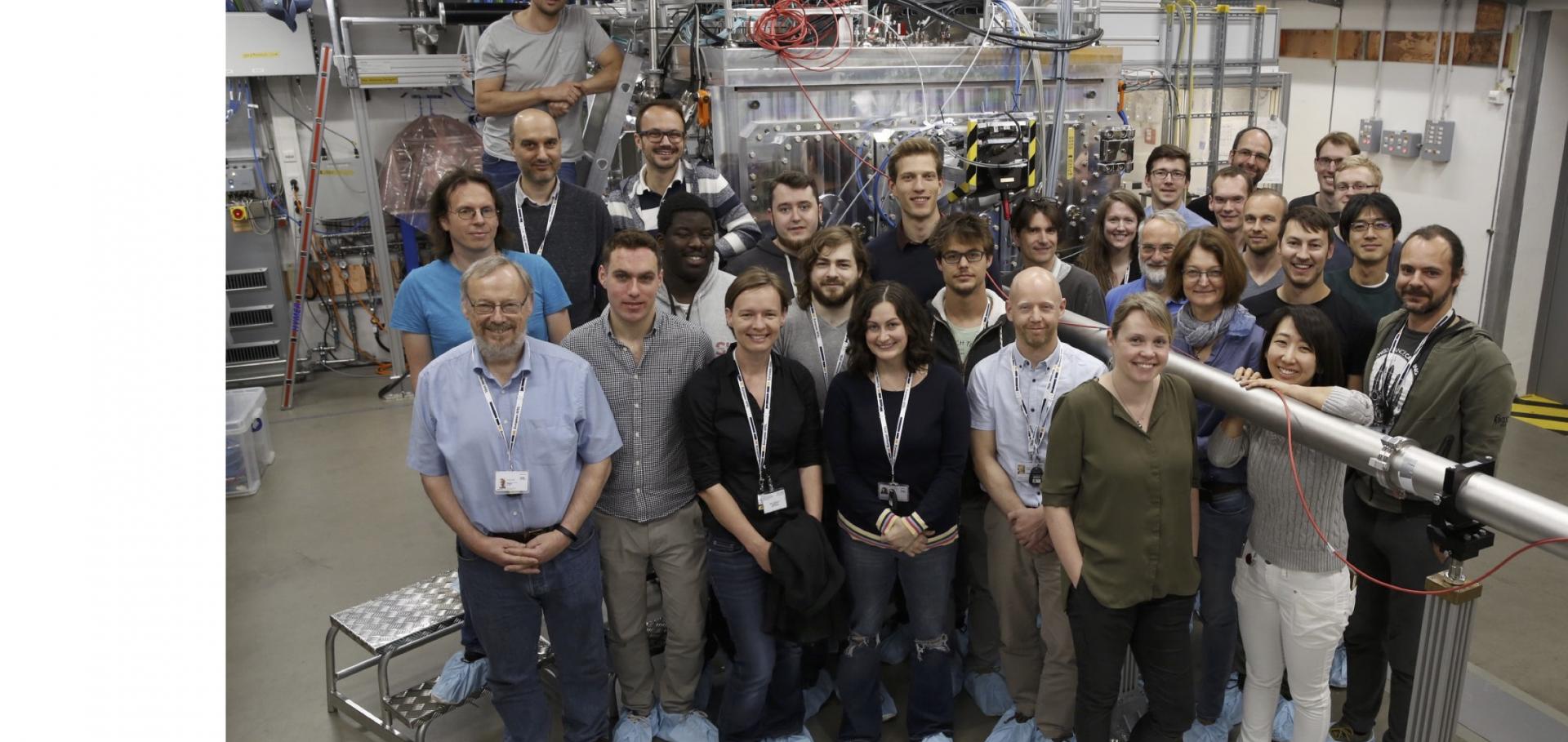Femtosecond diffraction and dynamic high pressure science
Journal of Applied Physics AIP Publishing 132 (2022) 080902
Abstract:
Solid-state material at high pressure is prevalent throughout the Universe, and an understanding of the structure of matter under such extreme conditions, gleaned from x-ray diffraction, has been pursued for the best part of a century. The highest pressures that can be reached to date (2 TPa) in combination with x-ray diffraction diagnosis have been achieved by dynamic compression via laser ablation [A. Lazicki et al., Nature 589, 532–535 (2021)]. The past decade has witnessed remarkable advances in x-ray technologies, with novel x-ray Free-Electron-Lasers (FELs) affording the capacity to produce high quality single-shot diffraction data on timescales below 100 fs. We provide a brief history of the field of dynamic compression, spanning from when the x-ray sources were almost always laser-plasma based, to the current state-of-the art diffraction capabilities provided by FELs. We give an overview of the physics of dynamic compression, diagnostic techniques, and the importance of understanding how the rate of compression influences the final temperatures reached. We provide illustrative examples of experiments performed on FEL facilities that are starting to give insight into how materials deform at ultrahigh strain rates, their phase diagrams, and the types of states that can be reached. We emphasize that there often appear to be differences in the crystalline phases observed between the use of static and dynamic compression techniques. We give our perspective on both the current state of this rapidly evolving field and some glimpses of how we see it developing in the near-to-medium term.Lawson criterion for ignition exceeded in an inertial fusion experiment
Physical Review Letters American Physical Society 129 (2022) 075001
Abstract:
For more than half a century, researchers around the world have been engaged in attempts to achieve fusion ignition as a proof of principle of various fusion concepts. Following the Lawson criterion, an ignited plasma is one where the fusion heating power is high enough to overcome all the physical processes that cool the fusion plasma, creating a positive thermodynamic feedback loop with rapidly increasing temperature. In inertially confined fusion, ignition is a state where the fusion plasma can begin “burn propagation” into surrounding cold fuel, enabling the possibility of high energy gain. While “scientific breakeven” (i.e., unity target gain) has not yet been achieved (here target gain is 0.72, 1.37 MJ of fusion for 1.92 MJ of laser energy), this Letter reports the first controlled fusion experiment, using laser indirect drive, on the National Ignition Facility to produce capsule gain (here 5.8) and reach ignition by nine different formulations of the Lawson criterion.Non-thermal evolution of dense plasmas driven by intense x-ray fields
(2022)
Atomistic investigation of cavitation and ablation in tantalum foils under irradiation with x-rays approaching 5 keV
Physical Review B American Physical Society 106 (2022) 024107
Abstract:
The rapid irradiation and heating of matter can lead to material removal via a process known as ablation. While previous investigations have focused on ablation with optical and soft x-ray pulses, the process is not well understood for the high-energy x-rays delivered at current x-ray free electron laser facilities. In this paper, we use hybrid two-temperature model molecular dynamics simulations to determine the damage threshold and dynamics for tantalum foils under irradiation with x-rays in the range 1–5 keV. We report that damage occurs for foils with thickness 300 nm when heated to around 1.25 eV/atom. This damage results from the combined processes of melting and cavitation, finally resulting in the removal of material layers. The predictions of this study, in terms of the cavitation threshold and underlying dynamics, could guide interpretation of experiments as well as applications including development of beamline optics for free-electron lasers. We report consistency between cavitation and ablation behavior in isochoric heating experiments and spall processes in hydrodynamic compression and release experiments, confirming the primary modes of damage are mechanical in nature for the x-ray energies investigated.Kinematics of plasticity-induced rotation during shock or ramp compression to extreme pressures
Morressier (2022)


